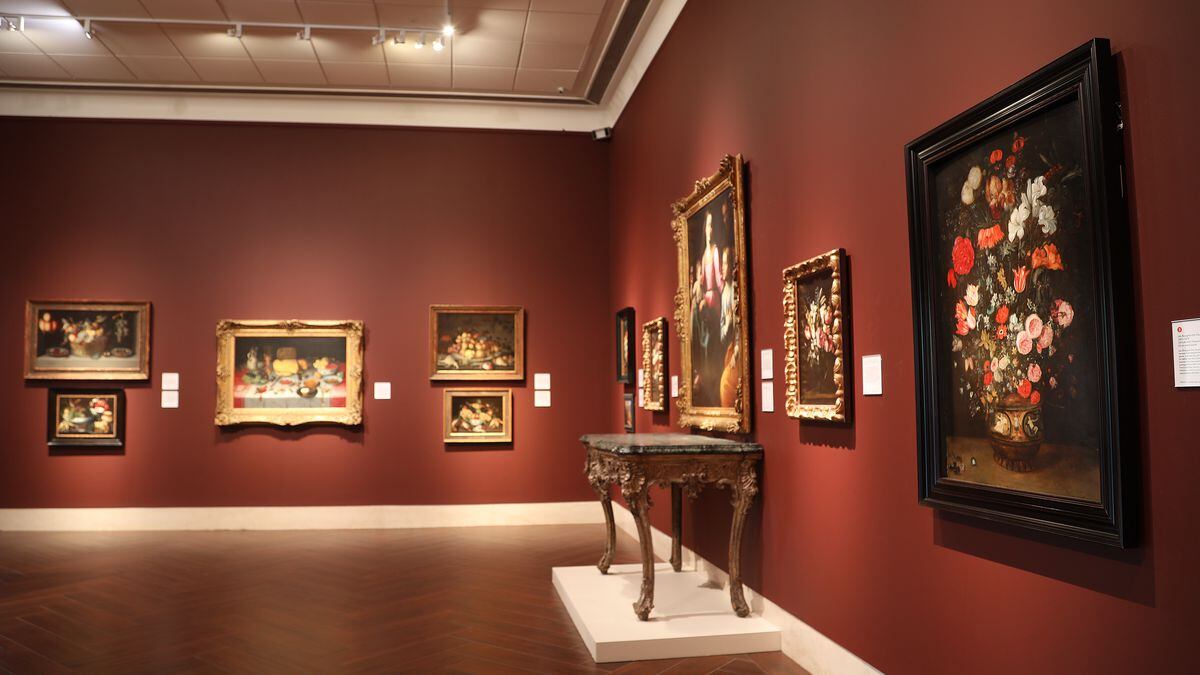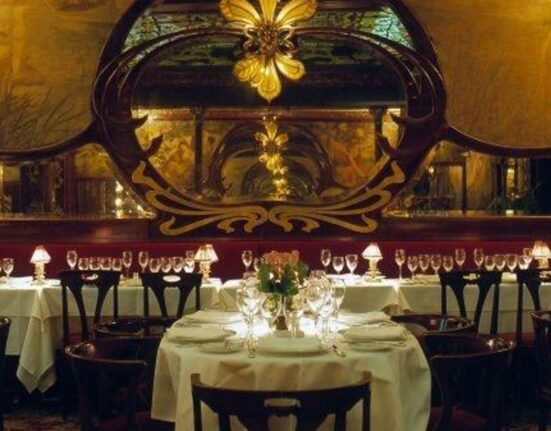ST. PETERSBURG — A fresh experience awaits visitors at the Museum of Fine Arts, St. Petersburg.
The museum recently completed a privately-funded renovation of the 18 galleries in the original museum, which houses their permanent collection. The complete overhaul of the 12,000 square foot space and a new way of installing the artwork makes it feel like a new museum. The museum did not disclose the cost of the renovation.
“What you’ll find as you go through the galleries is a completely reimagined visitor experience,” said Kristen Shepherd, executive director of the museum. “The galleries are arranged more or less chronologically, so that you’re really taking in a narrative of the history of art that allows us to amplify how great this collection is.”
The renovation was always planned and budgeted for 2020, but it was supposed to happen in phases that would take until the end of the year to complete.
When the coronavirus pandemic forced the museum to close in March, the decision was made to start the renovation early. The renovation was completed in October, two months ahead of schedule.
“We were able to accelerate it and saved time,” Shepherd said. “It’s really wonderful for us to open this early to the community.”
More than 100 works are now on display that weren’t there when the museum closed in March.
A Welcome Gallery greets visitors as they enter the wing, where a timeline of the museum’s history on one wall echoes a timeline of art history on the opposite wall. Visitors can pick up brochures for self-guided tours in curated themes including Form and Function, Animals and Insects and Death and Remembrance.
New works to the collection will be rotated in the Welcome Gallery. Fantasia, a three panel, dreamy painting of flowers and fairies by Nicola D’Ascenzo is the featured work on display.
Resonance, a new program, has been created to highlight the relationship of art and sound. Through a collaboration with the Florida Orchestra, curated archival performances are played in specific galleries throughout the day. It will eventually include spoken word and other auditory experiences like poetry, classic prose and artists’ writings.
The carpet has been removed, replaced with tile that looks like dark wood. Each gallery got new paint colors, ranging from deep red and burgundy to creamy whites. In some rooms, walls were removed, making the galleries less choppy and providing sweeping sightlines.
Planning your weekend?
Subscribe to our free Top 5 things to do newsletter
We’ll deliver ideas every Thursday for going out, staying home or spending time outdoors.
You’re all signed up!
Want more of our free, weekly newsletters in your inbox? Let’s get started.
Lighting has been reconsidered and vastly improved. Part of the renovation was to open the windows on the north wall of the original museum that had been closed off during a renovation in the 1980s. Now, artworks peek out of windows into the conservatory of the Hough wing and more light comes into the galleries.
Those changes make a dramatic impact, especially on the artwork. In the Southeast Asian and Asian Art gallery, the white walls and bright lighting showcase the color and intricacy of the Indian Jain Shrine.
Smaller art objects are better placed, too. Lovely little Buddhas share a case with a more morbid object, a Tibetan drum made of two human skulls. And a golden, mirrored Standing Buddha from Myanmar that had been in storage now shines in the corner of the gallery. The objects tell the story of Buddhism throughout different regions.
Throughout the galleries, informational labels help put the objects into context, a feature previously lacking in a lot of instances. It’s a much more fascinating experience.
New acquisitions and long term loans make their dramatic debut in the Ancient Art gallery. Against wine-colored walls, the white marble Roman Kline funerary monument circa 175-200 AD seems to glow. According to senior curator of early Western art, Michael Bennett, it’s the one of the largest single carvings from the Roman period in the United States.
Two galleries will showcase rotating exhibitions. Currently on display is “Explore the Vaults: Abstraction and the American Scene,” in which guests can peruse rarely shown, light sensitive works from 1900-1950 that are housed in large drawers. Cotton gloves will be provided.
“Working Point: Contemporary Glass from the MFA Collection” is on display in the other rotating gallery. It highlights glass works made with a variety of techniques.
In the first of the three European Art of the 13th-18th Centuries galleries, flowers and still lifes from the Baroque period gleam from burgundy walls. An interactive display provides information about Dutch trade of flowers, foods and spices, mapping details from the paintings in the gallery.
An Italian panel made of hardstones and marble circa 1625 is back on display after being restored. It was part of a series that decorated the chapel of a palace owned by the Medici family.
A damask fabric fitting of the Rococo period covers the walls in a gallery showcasing works and objects of that style, giving the gallery a very strong Versailles vibe.
The fabric that had adorned the walls of the Great Hall since 1965 has been removed, replaced with a soft neutral paint. The ornate, golden mirrors in the hall have been shined to reflect Kehinde Wiley’s 2011 painting, Leviathan Zodiac, which holds court in the hall.
Beloved staples from the collection are still on display. Looking for the museum’s famous Monet painting, Houses of Parliament: Effect of Fog, London? It’s on a periwinkle wall in the European and American Art of the 19th and 20th Centuries gallery, surrounded by other works from the era.
Three paintings by Georgia O’Keeffe, New York Night, Grey Hills Painted Red, New Mexico and Poppy, anchor the modernist works in the American Art of the 19th-21st Centuries. That gallery is divided into sections to group works into periods, which gives an understanding of how artistic movements developed and changed through time. It’s punctuated with an impactful gallery of abstract works that highlight the breadth of ideas and techniques in that genre.
One of the most exciting new aspects to the museum is the reinstallation of the African Art gallery. Guest curator Genevieve Hill-Thomas was hired to help conduct a research and cataloging project on the museum’s African objects and develop how the objects in the collection are presented.
There’s also an impressive collection of jade masks from the Olmec, Maya and Aztec civilizations of Mexico and Guatemala on display in the Mesoamerican Art gallery. Some objects date as far back as 900 B.C.
Beyond that, more objects and pottery from Mesoamerica are shown in a new light, with room to breathe in lighted cases.
The museum’s gardens have been refreshed.
The renovation and reinstallation have been part of Shepherd’s vision since she became the executive director four years ago.
“This is the story of the season,” she said. “There is such a transformation. It’s a wonderful community story because the community supported and grew this museum from the 1960s forward, and it continues to grow and change.”
After this story was published, corrections were made on the title of an artwork, a curator’s title and the material of the floors and wall fabric.
If you go
The Museum of Fine Arts, St. Petersburg. Tickets must be reserved online at mfastpete.org for timed entry in accordance with the museum’s COVID-19 safety measures. $20; $15 seniors/active military/Florida educators/ college students; $10 children ages 7-17; free for children 6 and younger and members. 10 a.m.-5 p.m. Tuesday-Wednesday; noon-8 p.m. Thursday-Friday; 10 a.m.-5 p.m. Saturday; noon-5 p.m. Sunday. The museum is closed on Mondays. 255 Beach Drive NE, St. Petersburg. (727) 896-2667.







